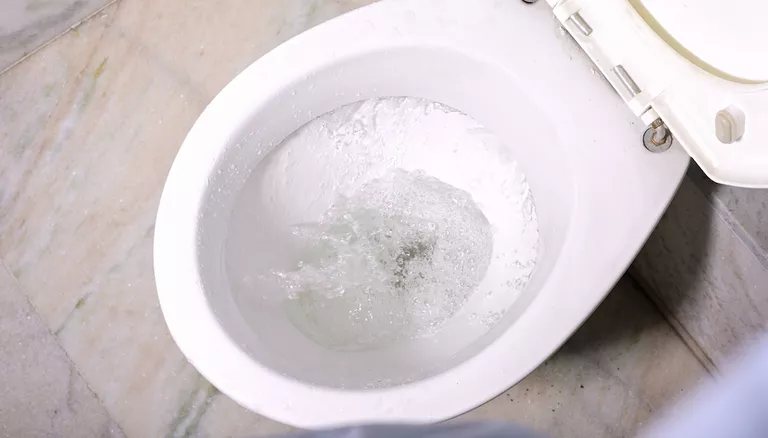Find local pros for your project
Tell us what you’re looking for and we’ll show you pros right for the job, with prices.
Updated
By Kristy Snyder
When cold weather hits, your home's pipes are susceptible to freezing. This is especially true in older homes without a lot of insulation or in homes with exposed pipes.
But how do you know if your pipes are frozen or just acting up? Let's dive into the warning signs of frozen pipes in your home so you can know whether or not you've got a problem on your hands.
Probably the most obvious sign of frozen pipes is reduced water flow. Any time you turn on the tap and find that water flows extremely slowly — or not at all — it's possible the pipes are frozen. A pipe that's completely frozen won't have any flow, but a partially frozen pipe might still have a slow trickle.
While you're waiting for your pipes to thaw, keep your taps open. Even the smallest bit of water flowing through the pipes can help keep them from totally freezing.
Pipes like to talk, but unusual noises are their cry for help. If you hear strange clanking, banging, or popping sounds when you run water or flush the toilet, it's not a ghost — it's potentially a frozen pipe struggling to let water pass. The ice inside the pipes is moving around, causing the cacophony.
Related: Why are my pipes making noise?
As water freezes, it expands, putting extra pressure on pipes. This can eventually lead to a burst pipe. A burst pipe will cause water damage to your walls or ceilings.
This is especially a concern for pipes that run along exterior walls or unheated areas like the basement. These places can get colder than the rest of the house, making them more likely to freeze and burst.
As we just mentioned, exposed pipes have a greater risk of freezing because they're not insulated. The only benefit of this? You can likely confirm from a visual inspection if your pipes are frozen or not. If you notice frost or ice on the exterior, it's a clear indication that your pipes could be frozen on the inside.
Next time, take preventive measures. For example, wrap those exposed pipes in insulation. An extra layer is like a warm winter coat, keeping pipes from freezing in the harsh cold.
Related: How long does it take for pipes to freeze?
 Toilet’s not cooperating? If your flush seems slower than usual — or, worse, not flushing at all — a frozen pipe might be the culprit. After all, if pipes are frozen, there's nowhere for the toilet water to go.
Toilet’s not cooperating? If your flush seems slower than usual — or, worse, not flushing at all — a frozen pipe might be the culprit. After all, if pipes are frozen, there's nowhere for the toilet water to go.
In this case, you'll likely want to hold off on flushing again until you can fix the problem. Otherwise, you risk backing up your system. You may need to hire a plumber to fix this issue.
Your home's water supply pipes aren't the only thing that can freeze. If your sewer lines freeze as well, you might start to notice something stinky.
Usually, waste is flushed pretty quickly through the line, but if it's frozen? It's stuck there, so nasty smells may make their way backward through the pipes and into your home.
If your pipes are under a lot of pressure due to ice expanding, you might see them physically start to bulge. It may resemble a snake that's just had a good meal. Humorous as it might look, it's not great, as it means the pipe is close to bursting.
Take steps to thaw out the pipes or contact a plumber immediately.
Now that you know how to know if pipes are frozen, your next question is probably, "How do I unfreeze them?" After you find the section of pipe that's frozen, here's a quick list of things you can try:
This is just a quick summary. Here are even more tips on how to thaw frozen pipes.
Even if you're unable to find and thaw your frozen pipes, call a plumber right away to prevent water damage to your home. Luckily, plumbers are pros at this sort of thing.
Skip the stress and download Thumbtack to see a list of top-rated plumbers near you. They'll handle the frozen pipe situation, leaving you with peace of mind and toasty pipes.
Related: Follow these 7 steps to find frozen pipes in your home.
Tell us what you’re looking for and we’ll show you pros right for the job, with prices.